Coke (the kind you drink) is one of the world’s most popular products and one of the world’s most recognizable brands. It’s also one of Warren Buffett’s oldest investments. But if you look up the stock symbol, you see two different companies: the Coca-Cola Company (KO) and Coca-Cola Consolidated (COKE). But why are there two, what’s the difference, and which should you invest in?
Let’s take a closer look.
Key Takeaways
- The Coca-Cola Company (KO) doesn’t make drinks. It supplies flavoring syrups to bottlers and licenses the right to use its brands.
- Coca-Cola Consolidated (COKE) does make drinks. It is the largest licensed US bottler of Coca-Cola and other related brands. They also sell several brands that are not owned by KO.
- Coca-Cola set up this business model intentionally. It allows the parent company to reduce its overhead and generate high margins from its licensing fees.
- Investors should understand the difference. Both companies have advantages and disadvantages, but investors need to know what they are buying and why.
How to Confuse an Investor
Few companies that exist today or have existed in the past have held such a strong competitive advantage in their respective field as The Coca-Cola Company. Created in 1886 by a pharmacist, Coca-Cola has, over the past 134 years, buried itself into the mind of billions of consumers around the world as being the perfect beverage to bring an element of happiness into their lives.
It’s little surprise then that over 1.9 billion servings of Coca-Cola products are consumed globally every single day.
Such a strong competitive advantage would naturally attract any serious investor, but when looking for more information about the company, it’ll be easy to become confused due to the unique peculiarity of The Coca-Cola Company’s business model.
Just look at IBIS World’s most recent report on the Soda Production industry, and you will see that there is almost no mention of The Coca-Cola Company, but still entire sections given to Pepsi and Keurig Dr. Pepper. The reason for this is that The Coca-Cola Company doesn’t actually produce very much soda.
The actual production of Coca-Cola’s beloved brands is done by independent partners and distributors, commonly known as “bottlers”. To make things more confusing for anyone hoping to invest in Coca-Cola is that the bottlers have nearly the exact same name.
While you won’t see The Coca-Cola Company listed in the Soda Production report next to Pepsi and Dr. Pepper, what you will see listed is Coca-Cola Bottling Co. Consolidated, the largest independent bottler of Coca-Cola within the United States. The similar names are deceiving, but the two are completely different companies, each listed separately on the New York Stock Exchange.
For clarification, here are the companies with the appropriate stock tickers:
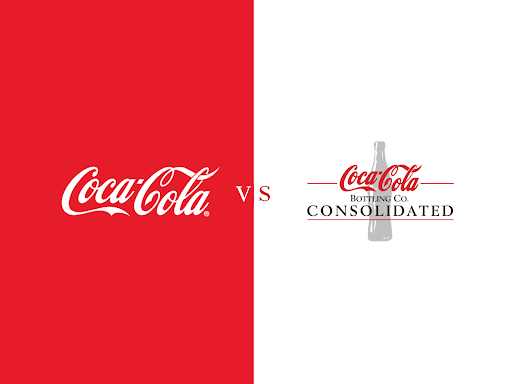
The Bottling Business
So, why does Coca-Cola have such a strange business model? Is it just to confuse us, investors?
Dating all the way back to the early 1900s, the makers of Coca-Cola realized they could improve not only their productivity and efficiency but also their profitability by having other companies do the manufacturing and distribution of their products. All Coke had to do was simply supply the raw material and allow the companies to use the Coca-Cola brand name, showing the immense power of brand recognition.
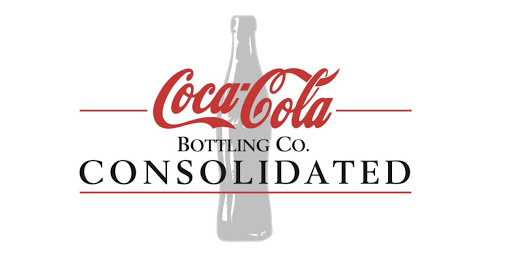
This business model grew more ingrained into the foundation of The Coca-Cola Company as their brand grew stronger worldwide. Demand for the red can, white lettering, and dark fizzing liquid inside grew year after year in almost every country on Earth. By 2020, the Coca-Cola network had 225 bottling partners in more than 200 countries; which is no surprise given that almost 85% of Coca-Cola’s sales come from outside the U.S.
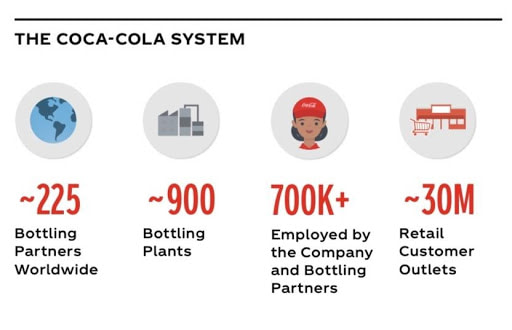
The arrangement between The Coca-Cola Company and its bottlers is set out in contracts. Each one states which Coca-Cola products the bottler is able to sell, in what region they are allowed to sell, as well as dozens of other variables laid out to make the distribution of Coca-Cola products as streamlined as possible.
Coca-Cola Bottling Co. Consolidated, for example, is authorized to sell 38 Coca-Cola products in 14 states and the District of Columbia. Coca-Cola Bottling also sells almost a dozen beverages outside of the Coca-Cola lineup including Dr. Pepper, Dunkin’ Donuts Coffee, and Monster Energy drinks.
Still, over 85% of the bottling company’s total sales were from Coca-Cola beverages, but even as the largest independent bottler in the United States, Coca-Cola Bottling still only brings in 12% of the revenue that The Coca-Cola Company brings in.
While The Coca-Cola Company offers funds for marketing efforts and other expenses, it largely leaves the bottlers to their own management. Each one gains its own retail customers within its given region and markets extensively to try and gain brand recognition. Incidentally, the vast majority of semi trucks and delivery vans plastered with the Coca-Cola logo are not actually owned by The Coca-Cola Company but are instead owned by local bottlers.
The sales of almost all bottling companies in the U.S. are highly concentrated in just a few large retailers. In 2019, Walmart represented 19% of Coca-Cola Bottling Co. Consolidated’s sales, with Kroger representing 12%.
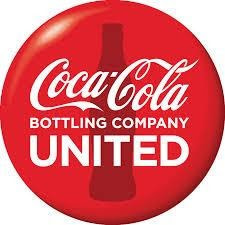
The Worse End of the Deal
The bottlers undoubtedly have the worse end of the deal, as they have to purchase and maintain the manufacturing and distribution equipment while also having to pay The Coca-Cola Company a vast portion of its income.
In 2019, Coca-Cola Bottling Co. Consolidated brought in $4.8 billion in revenue, with $1.3 billion of that going to The Coca-Cola Company for concentrate and syrup, consumer marketing programs, as well as drink equipment. While this arrangement is not inherently bad, it just makes profitability a more laborious task for the bottling company.
See the difference between the two’s profitability for yourself:
COKE’s Profitability
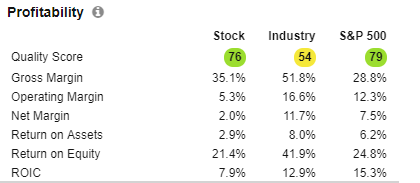
Source: Stock Rover
KO’s Profitability
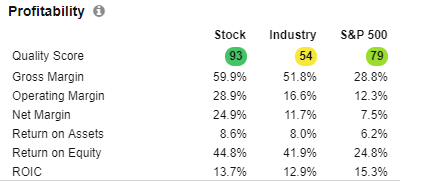
Source: Stock Rover
As you can see, KO’s profitability is higher in almost every regard, but the margins especially stand out. KO maintains a very robust 24% net profit margin, while COKE only operates at around 2%. Additionally, KO’s ROE is more than double COKE’s ROE.
Nevertheless, the Coca-Cola bottlers continue this arrangement with The Coca-Cola Company, given that they have virtually no other option. Given how strong consumer brands are within the beverage and food markets, the bottlers would have no success in trying to develop their own soft drink line, even if they did have all the ingredients, manufacturing equipment, and distribution channels.
Although the bottlers may not have the most lucrative business, the Coca-Cola network shows the genius of the Coca-Cola management, which realized early on that the value of their product was not in the production, distribution, or even the taste. The business recognized its own economic moat: the value of a worldwide brand.
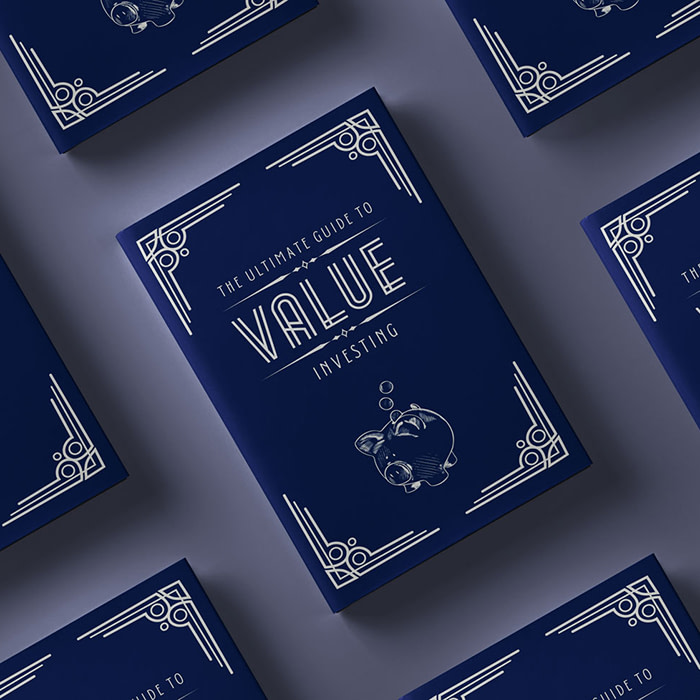
The Ultimate Guide to Value Investing
Do you want to know how to invest like the value investing legend Warren Buffett? All you need is money to invest, a little patience—and this book. Learn more

























Good article….. Dumb question –> but why are there no options available on this name?? COKE i mean